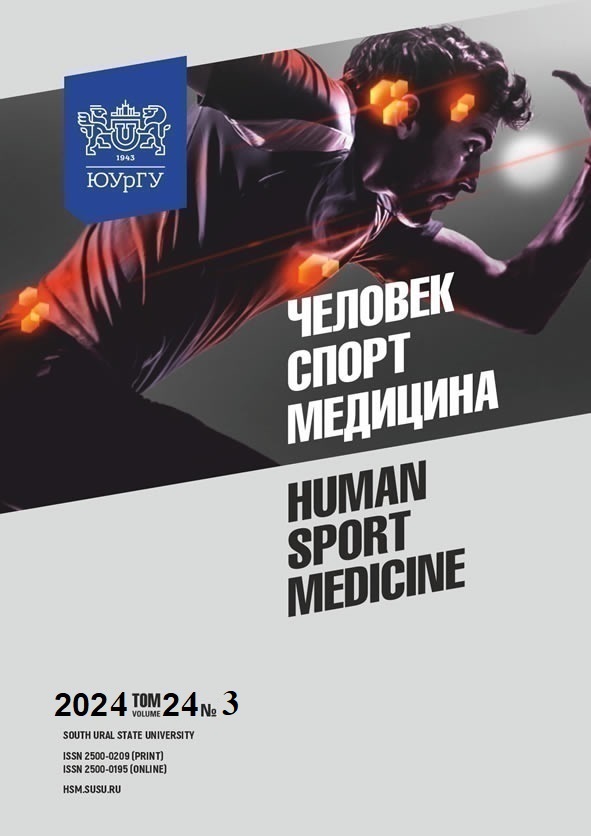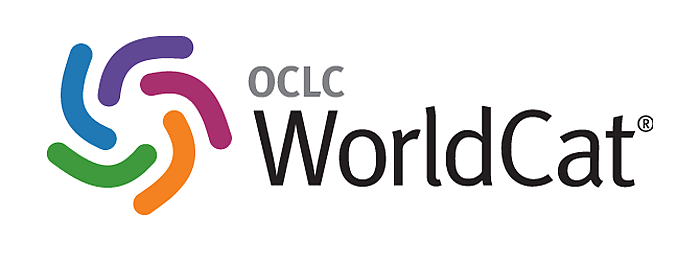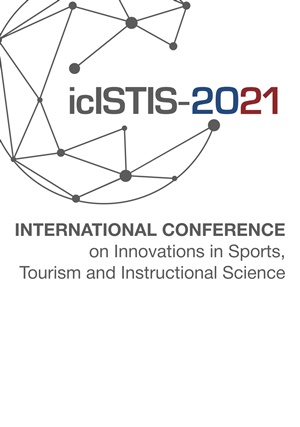ФАКТОРЫ СПОРТИВНОГО УСПЕХА В ЕДИНОБОРСТВАХ (ОБЗОР ЛИТЕРАТУРЫ). ЧАСТЬ 2
Аннотация
Цель: анализ современных научных данных о факторах, влияющих на успешность спортивной деятельности (УСД) в единоборствах. Материалы и методы. Обзор публикаций проводился с использованием баз данных PubMed и Google Scholar, а также платформ eLibrary и Cyberleninka по оригинальным исследованиям, опубликованным в рецензируемых журналах с 1991 по 2023 год. Результаты. В части 2 обзора сообщается, что наряду с антропометрическими и физическими факторами, влияющими на УСД в единоборствах, в последнее время растет значимость и других, таких как технико-тактические и психологические факторы. Тактика подготовки отечественных спортсменов базируется на развитии индивидуально-типологических (сильных) особенностей спортсменов. Зарубежные тренеры делают акцент на увеличение атакующих действий. Психологические факторы важны для успеха в соревнованиях, особенно у спортсменов элитного уровня, которые схожи по соревновательному опыту, физическому, техническому и тактическому уровню. Заключение. Эффективное управление тренировочным процессом в единоборствах возможно при строгом контроле факторов, влияющих на спортивную результативность.
Литература
2. Cieśliński I., Gierczuk D., Sadowski J. Identification of Success Factors in Elite Wrestlers – An Exploratory Study. Plos One, 2021, vol. 16, no. 3, e0247565. DOI: 10.1371journal.pone.0247565
3. d’Arripe-Longueville F., Fournier J.F., Dubois A. The Perceived Effectiveness of Interactions between Expert French Judo Coaches and Elite Female Athletes. The Sport Psychologist, 1998, vol. 12, pp. 317–332. DOI: 10.1123/tsp.12.3.317
4. Dijkstra P.D., Preenen P.T., Van Essen H. Does Blue Uniform Color Enhance Winning Probability in Judo Contests? Frontiers in Psychology, 2018, vol. 9, art. 45. DOI: 10.3389/fpsyg.2018.00045
5. Dijkstra P.D., Preenen P.T. No Effect of Blue on Winning Contests in Judo. Proceedings of the Royal Society B: Biological Sciences, 2008, vol. 275, no. 1639, pp. 1157–1162. DOI: 10.1098/ rspb.2007.1700
6. Dinu D., Millot B., Slawinski J. et al. An Examination of the Biomechanics of the Cross, Hook and Uppercut between Two Elite Boxing Groups. Proceedings, 2020, vol. 49, no. 1, p. 61. DOI: 10.3390/proceedings2020049061
7. Hagemann N., Strauss B., Leißing J. When the Referee Sees Red… Psychological Science, 2008, vol. 19, no. 8, pp. 769–771. DOI: 10.1111/j.1467-9280.2008.02155.x
8. Heikura E.E., Aunola K., Tolvanen A. et al. Student-athletes’ Mood State Profiles: the Role of Sports, Sex, and Performance Level in Sports and in School. Journal of Applied Sport Psychology, 2023, pp. 1–18. DOI: 10.1080/10413200.2022.2158250
9. Hill R.A, Barton R.A. Red Enhances Human Performance in Contests. Nature, 2005, vol. 435, no. 293, p. 293. DOI: 10.1038/435293а
10. Ishikawa T., Draeger D.F. Judo Training Methods: A Sourebook. Tuttle Publishing, 2011. 328 p.
11. Jagiello W., Dornowsky M., Wolska B. Basic Technical Skills (Throws) in 17–19-year-old Judokas. Physical Education of Students, 2014, no. 6, pp. 77–80. DOI: 10.15561/20755279.2014.0615
12. Karelin A.A., Ivanyuzhenkov B.V. Psychology of Sports Rivalry. Bulletin of the Baltic Pedagogical Academy, 2005, no. 58, рр. 66–70.
13. Kavoura A., Ryba T.V., Kokkonen M. Psychological Research on Martial Artists. Scandinavian Sport Studies Forum. Malmö University, Department of Sport Sciences, 2012, vol. 3, pp. 1–23.
14. Kons R.L, Agostinho M.F., Santos, D.F.C. et al. Match-related Performance During the Olympic Games 2020: a Technical Variability Analysis of High-level Judo Athletes. International Journal of Performance Analysis in Sport, 2022, vol. 22, no. 4, pp. 516–525. DOI: 10.1080/24748668.2022.2084594
15. Miarka B., Brito C.J., Moreira D.G. et al. Differences by Ending Rounds and Other Rounds in Time-motion Analysis of Mixed Martial Arts: Implications for Assessment and Training. The Journal of Strength & Conditioning Research, 2018, vol. 32, no. 2, pp. 534–544. DOI: 10.1519/JSC.0000000000001804
16. Okada C. Can Overcoming Issues of Gender be an Olympic Legacy (Commentary): A Need for Comprehensive Change. Sport in Society, 2023, vol. 26, no. 1, pp. 147–153. DOI: 10.1080/17430437. 2021.1961745
17. Osipov A., Kudryavtsev M., Fedorova P. et al. Comparative Analysis of the Scientific Views of Russian and Foreign Scientists on the Problem of Training Skilled Judo Wrestlers. Journal of Physical Education and Sport, 2017, vol. 17, no. 1, pp. 288–293. DOI: 10.7752/jpes.2017.01043
18. Osipov A.Yu. Increasing Level of Technical Skills of Young Wrestlers of Sambo and Judo. Bulletin of Krasnoyarsk State Pedagogical University named after V.P. Astafiev, 2013, vol. 2, no. 24, pp. 93–95.
19. Pic M., Jonsson G.K. Professional Boxing Analysis with T-Patterns. Physiology & Behavior, 2021, vol. 232, 113329. DOI: 10.1016/j.physbeh.2021.113329
20. Polevoy G.G. The Influence of Burpee on the Volume of Attention of Schoolchildren. Bangladesh Journal of Medical Science, 2023, vol. 22, no. 2, pp. 392–397. DOI: 10.3329/bjms.v22i2.65001
21. Robazza C., Bortoli L., Hanin Y. Precompetition Emotions, Bodily Symptoms, and Task-specific Qualities as Predictors of Performance in High-level Karate Athletes. Journal of Applied Sport Psychology, 2004, vol. 16, no. 2, pp. 151–165. DOI: 10.1080/10413200490437679
22. Rowe C., Harris J.M., Roberts S.C. Seeing Red? Putting Sportswear in Context. Nature, 2005, vol. 437, E10. DOI: 10.1038/nature04306
23. Ruiz M.C., Hanin Y.L. Athletes’ Self Perceptions of Optimal States in Karate: An Application of the IZOF Model. Revista de Psicología del Deporte, 2004, vol. 13, no. 2, рр. 229–244.
24. Ruiz M.C., Hanin Y.L. Metaphoric Description and Individualized Emotion Profiling of Performance Related States in High-level Karate Athletes. Journal of Applied Sport Psychology, 2004, vol. 16, no. 3, рр. 258–273. DOI: 10.1080/10413200490498366
25. Ruiz M.C., Hanin Y.L. Idiosyncratic Description of Anger States in Skilled Spanishkarate Athletes: An Application of the IZOF Model. Revista de Psicología del Deporte, 2004, vol. 13, no. 1, рр. 75–93.
26. Rushall B.R. Psychological Factors and Mental Skills in Wrestling. The Sport Psychologist’s Handbook. A Guide for Sport-Specific Performance Enhancement, Chichester: John Wiley & Sons, 2006, pp. 375–399. DOI: 10.1002/9780470713174.ch17
27. Tarabrina N.Y., Kraev Y.V., Tikhonov A.I. Physiological Substantiation and Practical Implementation of Methods of Development of Strength-building Component of Endurance Training for Wrestlers. Theory and Practice of Physical Culture, 2020, no. 4, pp. 14–16.
28. Tarabrina N.Yu., Wilczewski T. Physiological Characteristics of Strength Component of Special Endurance in Rugby Players. Human. Sport. Medicine, 2022, vol. 22, no. 2, pp. 7–14. DOI: 10.14529/hsm220201
29. Tropin Y., Chuev A. Technical and Tactical Readiness Model Characteristics in Wrestling. Slobozhanskyi Herald of Science and Sport, 2017, vol. 59, no. 3, pp. 64–67. DOI: 10.15391/ snsv.2017-3.019
30. Wan H. Improvement of Physical Fitness by the Martial Arts Training Program. Revista Brasileira de Medicina do Esporte, 2023, vol. 29, рр. 1–4. DOI: 10.1590/1517-8692202329012022_0646
References
1. Adam M., Wolska B. The General Individual Technical-tactical Profile of the Multi-medallist Judo Athlete Teddy Riner’s. Archives of Budo. Science of Martial Arts Extreme Sport, 2016, vol. 12, pp. 37–44.2. Cieśliński I., Gierczuk D., Sadowski J. Identification of Success Factors in Elite Wrestlers – An Exploratory Study. Plos One, 2021, vol. 16, no. 3, e0247565. DOI: 10.1371journal.pone.0247565
3. d’Arripe-Longueville F., Fournier J.F., Dubois A. The Perceived Effectiveness of Interactions between Expert French Judo Coaches and Elite Female Athletes. The Sport Psychologist, 1998, vol. 12, pp. 317–332. DOI: 10.1123/tsp.12.3.317
4. Dijkstra P.D., Preenen P.T., Van Essen H. Does Blue Uniform Color Enhance Winning Probability in Judo Contests? Frontiers in Psychology, 2018, vol. 9, art. 45. DOI: 10.3389/fpsyg.2018.00045
5. Dijkstra P.D., Preenen P.T. No Effect of Blue on Winning Contests in Judo. Proceedings of the Royal Society B: Biological Sciences, 2008, vol. 275, no. 1639, pp. 1157–1162. DOI: 10.1098/ rspb.2007.1700
6. Dinu D., Millot B., Slawinski J. et al. An Examination of the Biomechanics of the Cross, Hook and Uppercut between Two Elite Boxing Groups. Proceedings, 2020, vol. 49, no. 1, p. 61. DOI: 10.3390/proceedings2020049061
7. Hagemann N., Strauss B., Leißing J. When the Referee Sees Red… Psychological Science, 2008, vol. 19, no. 8, pp. 769–771. DOI: 10.1111/j.1467-9280.2008.02155.x
8. Heikura E.E., Aunola K., Tolvanen A. et al. Student-athletes’ Mood State Profiles: the Role of Sports, Sex, and Performance Level in Sports and in School. Journal of Applied Sport Psychology, 2023, pp. 1–18. DOI: 10.1080/10413200.2022.2158250
9. Hill R.A, Barton R.A. Red Enhances Human Performance in Contests. Nature, 2005, vol. 435, no. 293, p. 293. DOI: 10.1038/435293а
10. Ishikawa T., Draeger D.F. Judo Training Methods: A Sourebook. Tuttle Publishing, 2011. 328 p.
11. Jagiello W., Dornowsky M., Wolska B. Basic Technical Skills (Throws) in 17–19-year-old Judokas. Physical Education of Students, 2014, no. 6, pp. 77–80. DOI: 10.15561/20755279.2014.0615
12. Karelin A.A., Ivanyuzhenkov B.V. Psychology of Sports Rivalry. Bulletin of the Baltic Pedagogical Academy, 2005, no. 58, рр. 66–70.
13. Kavoura A., Ryba T.V., Kokkonen M. Psychological Research on Martial Artists. Scandinavian Sport Studies Forum. Malmö University, Department of Sport Sciences, 2012, vol. 3, pp. 1–23.
14. Kons R.L, Agostinho M.F., Santos, D.F.C. et al. Match-related Performance During the Olympic Games 2020: a Technical Variability Analysis of High-level Judo Athletes. International Journal of Performance Analysis in Sport, 2022, vol. 22, no. 4, pp. 516–525. DOI: 10.1080/24748668.2022.2084594
15. Miarka B., Brito C.J., Moreira D.G. et al. Differences by Ending Rounds and Other Rounds in Time-motion Analysis of Mixed Martial Arts: Implications for Assessment and Training. The Journal of Strength & Conditioning Research, 2018, vol. 32, no. 2, pp. 534–544. DOI: 10.1519/JSC.0000000000001804
16. Okada C. Can Overcoming Issues of Gender be an Olympic Legacy (Commentary): A Need for Comprehensive Change. Sport in Society, 2023, vol. 26, no. 1, pp. 147–153. DOI: 10.1080/17430437. 2021.1961745
17. Osipov A., Kudryavtsev M., Fedorova P. et al. Comparative Analysis of the Scientific Views of Russian and Foreign Scientists on the Problem of Training Skilled Judo Wrestlers. Journal of Physical Education and Sport, 2017, vol. 17, no. 1, pp. 288–293. DOI: 10.7752/jpes.2017.01043
18. Osipov A.Yu. Increasing Level of Technical Skills of Young Wrestlers of Sambo and Judo. Bulletin of Krasnoyarsk State Pedagogical University named after V.P. Astafiev, 2013, vol. 2, no. 24, pp. 93–95.
19. Pic M., Jonsson G.K. Professional Boxing Analysis with T-Patterns. Physiology & Behavior, 2021, vol. 232, 113329. DOI: 10.1016/j.physbeh.2021.113329
20. Polevoy G.G. The Influence of Burpee on the Volume of Attention of Schoolchildren. Bangladesh Journal of Medical Science, 2023, vol. 22, no. 2, pp. 392–397. DOI: 10.3329/bjms.v22i2.65001
21. Robazza C., Bortoli L., Hanin Y. Precompetition Emotions, Bodily Symptoms, and Task-specific Qualities as Predictors of Performance in High-level Karate Athletes. Journal of Applied Sport Psychology, 2004, vol. 16, no. 2, pp. 151–165. DOI: 10.1080/10413200490437679
22. Rowe C., Harris J.M., Roberts S.C. Seeing Red? Putting Sportswear in Context. Nature, 2005, vol. 437, E10. DOI: 10.1038/nature04306
23. Ruiz M.C., Hanin Y.L. Athletes’ Self Perceptions of Optimal States in Karate: An Application of the IZOF Model. Revista de Psicología del Deporte, 2004, vol. 13, no. 2, рр. 229–244.
24. Ruiz M.C., Hanin Y.L. Metaphoric Description and Individualized Emotion Profiling of Performance Related States in High-level Karate Athletes. Journal of Applied Sport Psychology, 2004, vol. 16, no. 3, рр. 258–273. DOI: 10.1080/10413200490498366
25. Ruiz M.C., Hanin Y.L. Idiosyncratic Description of Anger States in Skilled Spanishkarate Athletes: An Application of the IZOF Model. Revista de Psicología del Deporte, 2004, vol. 13, no. 1, рр. 75–93.
26. Rushall B.R. Psychological Factors and Mental Skills in Wrestling. The Sport Psychologist’s Handbook. A Guide for Sport-Specific Performance Enhancement, Chichester: John Wiley & Sons, 2006, pp. 375–399. DOI: 10.1002/9780470713174.ch17
27. Tarabrina N.Y., Kraev Y.V., Tikhonov A.I. Physiological Substantiation and Practical Implementation of Methods of Development of Strength-building Component of Endurance Training for Wrestlers. Theory and Practice of Physical Culture, 2020, no. 4, pp. 14–16.
28. Tarabrina N.Yu., Wilczewski T. Physiological Characteristics of Strength Component of Special Endurance in Rugby Players. Human. Sport. Medicine, 2022, vol. 22, no. 2, pp. 7–14. DOI: 10.14529/hsm220201
29. Tropin Y., Chuev A. Technical and Tactical Readiness Model Characteristics in Wrestling. Slobozhanskyi Herald of Science and Sport, 2017, vol. 59, no. 3, pp. 64–67. DOI: 10.15391/ snsv.2017-3.019
30. Wan H. Improvement of Physical Fitness by the Martial Arts Training Program. Revista Brasileira de Medicina do Esporte, 2023, vol. 29, рр. 1–4. DOI: 10.1590/1517-8692202329012022_0646
Copyright (c) 2024 Человек. Спорт. Медицина

Это произведение доступно по лицензии Creative Commons «Attribution-NonCommercial-NoDerivatives» («Атрибуция — Некоммерческое использование — Без производных произведений») 4.0 Всемирная.















